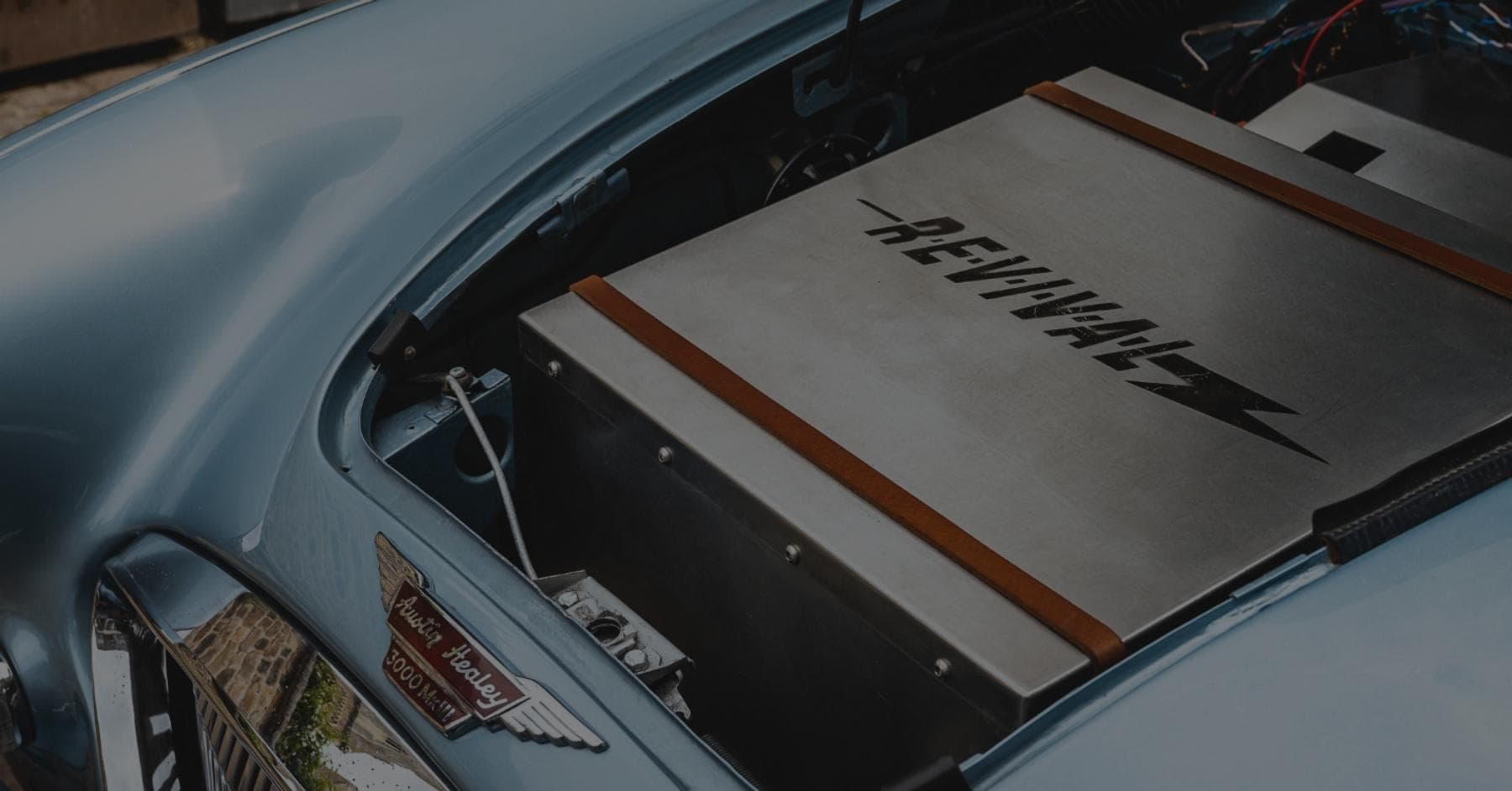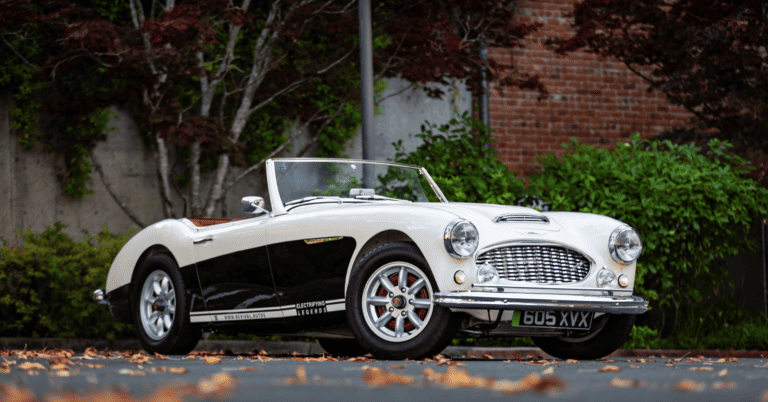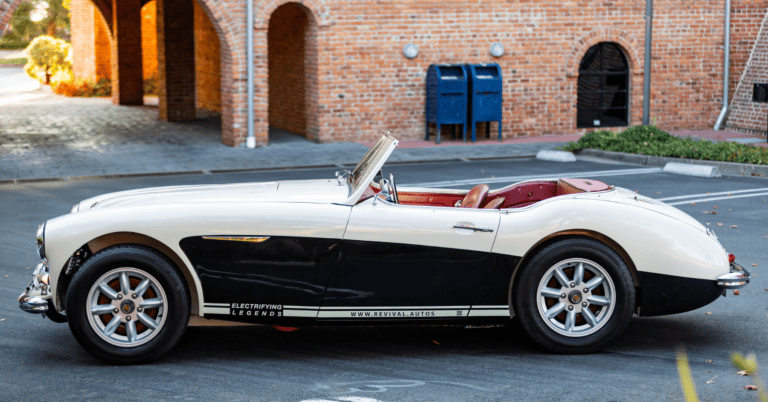In a world increasingly attuned to environmental concerns, thought of converting your trusty old gas guzzler into eco-conscious electric marvel is gaining momentum at impressive pace. Imagine this: an electric vehicle conversion that not only reduces your carbon footprint but also slices your fuel costs by up to 70% while significantly diminishing maintenance expenses.
It’s paradigm shift that aligns perfectly with future. As electric vehicles are projected to constitute a whopping 58% of global car sales by 2040. The time to delve into intricacies of how to convert a car to electric is now. Join us on this electrifying journey. Uncover how this transformation can redefine your driving experience and lead to a cleaner, more sustainable tomorrow.
Learn more: electric classic cars
Why Opt for Car-to-Electric Conversion?
Environmental Advantages
Electric vehicles (EVs) are synonymous with zero tailpipe emissions, making a tangible contribution to cleaner air quality and reduced greenhouse gas emissions.
Economic Viability
Over the long run, EVs can be cost-effective thanks to their lower operational and maintenance expenses compared to traditional gasoline-powered vehicles.
Thrilling Performance
Electric motors are all about instant torque, ensuring a responsive and exhilarating driving experience that’ll put a grin on your face.
Fuel Freedom
Bid farewell to the unpredictable whims of gasoline prices. With an electric car, you have the convenience of home charging, potentially saving substantially on fuel costs.
Step 1: Research and Planning
1.1 Feasibility Assessment
Begin by evaluating whether your car is a suitable candidate for conversion. Factors like available battery space, the vehicle’s weight, and its overall condition come into play. Seeking guidance from experienced conversion specialists can provide invaluable insights.
1.2 Budgeting
Set a clear budget for your conversion project. Costs can vary considerably depending on your car’s make and model, the components you select, and whether you opt for professional installation or a DIY approach.
1.3 Legal and Safety Matters
Dive into research regarding local regulations and safety standards relevant to electric vehicle conversions. Compliance with these standards is paramount to ensure the roadworthiness and safety of your converted vehicle.
Step 2: Component Selection
2.1 Electric Motor and Controller
Choose an electric motor and controller that align with your performance goals. Consider factors such as power output, efficiency, and compatibility with your specific vehicle.
2.2 Battery Selection
Opt for a battery pack that suits your needs. The type of battery (e.g. lithium-ion) have a great impact on your car. Capacity of battery will directly impact your car range and performance. Ensure it fits securely within your vehicle.
2.3 Charging Infrastructure
Determine the best charging setup for your requirements. Options range from standard home charging stations to access to fast-charging networks. Tailor your choice to your daily driving habits.
Step 3: The Engine Swap
3.1 The Real Transformation
This is where the magic happens. Removing the existing engine, transmission related components is a challenging task. Often it requires professional expertise. Strict adherence to safety protocols is non negotiable.
Step 4: Installing the Electric Components
4.1 Electric Motor Integration
Mount the electric motor in the engine bay with meticulous care. Proper alignment and secure fastening are critical for safe operation.
4.2 Battery Installation
Position the battery pack securely within your vehicle. This involves precise measurements and secure anchoring to prevent any movement while driving.
4.3 Wiring and Connections
Interconnect the various components, including the motor, battery pack, controller, and charging system. Prudent wiring is indispensable for the safe and efficient operation of your electric car.

Step 5: Testing and Calibration
5.1 Meticulous Component Testing
During this phase, every component of your electric vehicle undergoes scrupulous testing. This includes the electric motor, battery pack, controller, charging system, and all associated electronics. Comprehensive testing ensures that all parts function harmoniously and effectively.
5.2 Calibration for Peak Performance
Calibration fine-tunes the performance of your EV, optimizing efficiency and power output. Adjustments to various parameters within the motor controller and battery management system ensure your electric vehicle delivers exhilarating performance.
5.3 Safety First
Safety checks are of paramount importance. Rigorous inspections ascertain the secureness of all electrical connections and confirm that your vehicle’s safety systems, including high-voltage cutoffs and emergency shutdown procedures, operate as intended.
5.4 Efficient Eco-Driving
Efficiency testing evaluates your EV’s energy consumption and range. This assessment determines the overall eco-friendliness of your vehicle and ensures you maximize each charge.
5.5 Data Logging and Troubleshooting
Throughout testing and calibration, data logging monitors your vehicle’s performance in real-world conditions. This data is instrumental in identifying and resolving potential issues before they escalate.
Step 6: Adherence to Regulations and Inspection
Verify that your converted electric vehicle complies with local regulations. Schedule a comprehensive inspection to confirm that your conversion meets all safety and emissions standards.
Step 7: Final Touches
7.1 Interior and Exterior Restorations
Any interior or exterior modifications made during the conversion process are meticulously restored to preserve your vehicle’s aesthetic appeal.
7.2 The Finishing Touch
Give your converted electric car a final once-over to ensure all connections are secure and any last-minute adjustments are addressed.
Step 8: Embrace the Electric Revolution
Congratulations! Your vehicle has undergone an astonishing transformation. Now, relish the benefits of your electric ride, delighting in smooth, silent drives, and knowing that you’re playing a part in ushering in a cleaner environment with each mile.
Conclusion
Converting your car to electric is a journey that combines innovation with sustainability. While it necessitates meticulous planning, precise execution, and a steadfast commitment to safety, the rewards are profound. With electric driving benefits at your fingertips, you also contribute to a reduction in our collective carbon footprint. So, if you’ve ever pondered how to convert your car to electric, follow these steps, and you’ll be embarking on a path to a cleaner, greener driving future.
Contact Revival Autos for Your Car-to-Electric Conversion
At Revival Auto, we take immense pride in our unparalleled expertise and unwavering dedication to transforming classic vehicles into cutting-edge electric marvels. Our focus remains firmly on iconic models like the Austin Healey 100 and Austin Healey 3000. What sets us apart is our commitment to preserving the timeless charm and authenticity of these classic cars while seamlessly integrating state-of-the-art electric powertrains. When you choose us, you’re selecting a team of passionate experts who grasp the intricacies of these cherished classics and possess the technical prowess to guarantee a flawless electric conversion. Our meticulous attention to detail, coupled with an innovative spirit, ensures your Austin Healey maintains its legendary design while embracing the future of eco-friendly, high-performance driving. Join us at Revival Auto, where tradition meets innovation, and classic cars become a sustainable legacy.
Meet Our Experts at Revival Auto
Our experts at Revival Auto defy the conventional label of mere automotive enthusiasts. They are visionaries and artisans, profoundly passionate about the delicate art of preserving classic cars while embracing the possibilities of electric propulsion. Beyond their technical acumen, their differentiating factor lies in their unwavering commitment to excellence. Armed with an expansive reservoir of knowledge, our experts possess rare blend of skills. This marries the romance of bygone eras with the precision of modern technology. They are architects of transformation. Meticulously devising and executing electric conversions that honor legacy of iconic classics such as the Austin Healey 100 and Austin Healey 3000. When you entrust your cherished vehicle to our experts, you’re not merely reaping the benefits of their expertise; you’re becoming an integral part of a passionate community devoted to reshaping the future of classic car excellence.
FAQs: How To Convert Car To Electric
- What is an electric car conversion?
An electric car conversion involves replacing a conventional gasoline or diesel engine. After that we have to add an electric motor and battery system to make a vehicle run on electricity.
- How much does it cost to convert a car to electric?
The cost of a car conversion varies. It depends on Many factors. For example vehicle’s make and model, the quality of components used. Whether you choose professional installation or a DIY approach.
- Is it difficult to convert a car to electric?
Converting a car to electric can be a complex process. It’s difficult especially for those without prior experience in automotive mechanics and electrical systems. It requires a certain level of technical skill.
- Can any car be converted to electric?
In theory most cars can be converted to electric. However ease of conversion can vary significantly depending on the vehicle’s make. It also depends on model and structural integrity.
- What are the environmental benefits of converting a car to electric?
Converting car to electric reduces greenhouse gas emissions. It also helps to decrease air pollution. That ultimately contribute to a cleaner environment and reduced carbon footprint.
- How long to convert car to electric?
The duration of car conversion project vary widely based on many factors. For example, complexity of the conversion, availability of components and expertise of the individuals or professionals involved.
- Can I convert a gasoline car to hybrid instead of fully electric?
Yes, it’s possible to convert a gasoline car to a hybrid by adding an electric motor and a smaller battery, allowing for both gasoline and electric propulsion.
- Where can I find the necessary electric conversion components?
Electric conversion components, such as electric motors and battery packs, can be sourced from specialized suppliers, salvage yards, or even purchased new from manufacturers.
- Are there any government incentives for car conversions to electric?
Some regions offer incentives, tax credits, or rebates for electric car conversions as part of their efforts to promote cleaner transportation. Be sure to check local regulations and incentives.
- Can I still use the original transmission in an electric car conversion?
In many cases, the original transmission of a car can be retained in an electric conversion, but it may require modifications to work efficiently with the electric motor.





